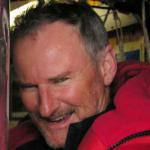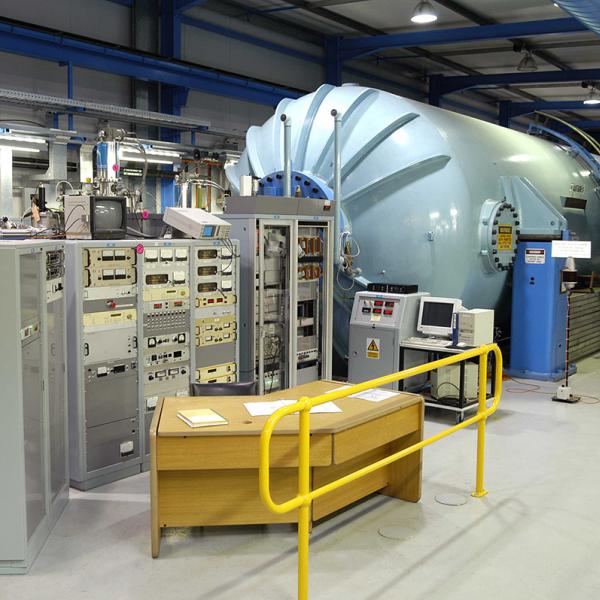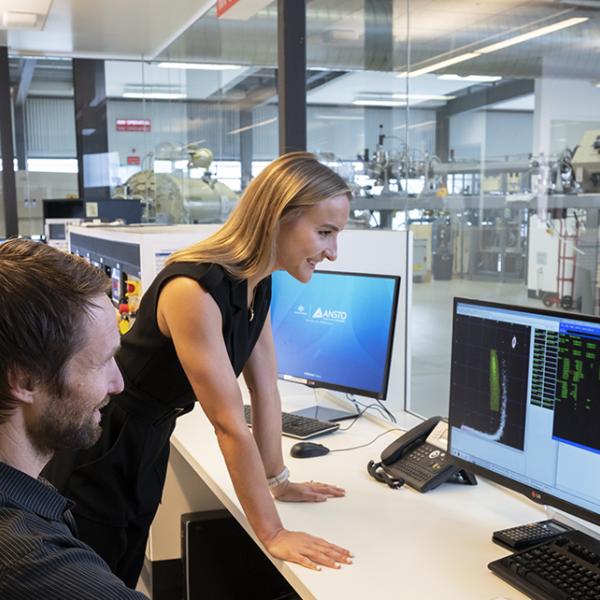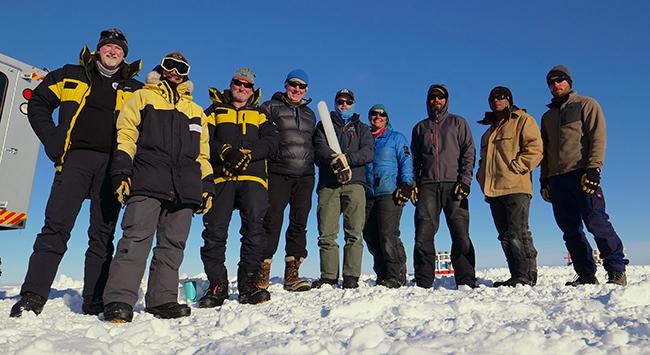
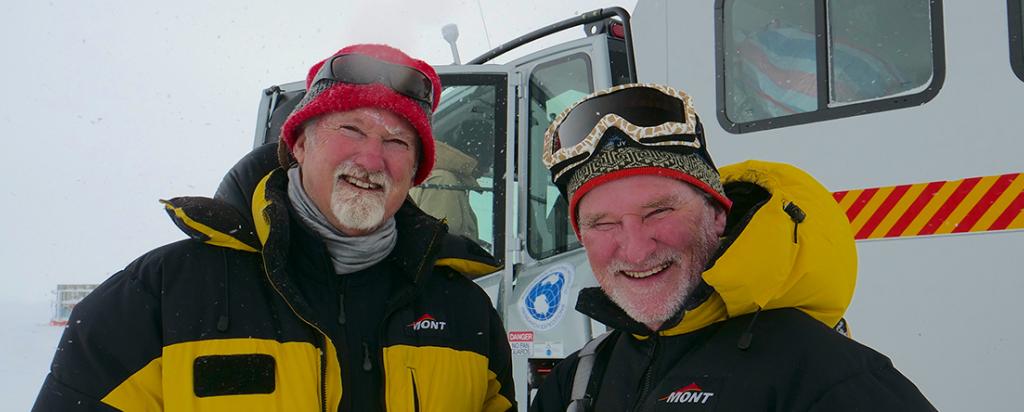
Published on the 7th April 2020 by ANSTO Staff
The Foreign Correspondent segment ‘Atom hunters’, that was broadcast on the ABC highlighting important environmental research in Antarctica to reconstruct climate history, is a family collaboration.
“It seemed a natural opportunity for me as a scientist and for my brother Richard as an accomplished producer of science documentaries,” said senior research scientist Dr Andrew Smith.
“Our research team has pioneered the development of highly sensitive techniques to study carbon in environmental samples for climate research.
These techniques are underpinned by accelerator mass spectrometry that literally counts individual atoms of radiocarbon in very small samples.”
Using ice cores from polar ice caps that contain minute samples of past atmospheric gases trapped as bubbles, the measurements are used to reconstruct a history of climate.
“Our research team has been studying methane, an important greenhouse gas, using these techniques for many years, both in the Arctic and the Antarctic. In this new study, we have turned our attention to another atmospheric component, the hydroxyl radical. Knowledge of this is important as it is known as the ‘detergent of the atmosphere’ and removes methane, and other trace gases,” said Andrew.
“The methane studies were challenging enough, yielding individual samples containing just a few millions of a gram of carbon. This is next level.”
Dr Richard Smith, who has a PhD in marine biology, has also spent many decades travelling to remote places where interesting science takes place to make award-winning science documentaries for the ABC and independently.
“It seemed like the perfect combination for a documentary,” said Richard, who often works as a one-man cameraman in challenging locations around the globe.
“I think the program will give people a sense of what it is like to be a scientist who travels to the end of the Earth in pursuit of fundamental information about how our planet works.
I wanted to capture how an expert international team – and my brainy brother - take on the challenges of this sort of meticulous, painstaking research in such adverse conditions: it’s a tale of cold, hard science at the cold, cutting edge,” said Richard.
“The National Science Foundation, which awarded a funding grant to principal researcher Dr Vasilii Petrenko at the University of Rochester, is very keen on public outreach as part of the outcome. The Australian Antarctic Division, the CSIRO and ANSTO, all of whom contributed to the project, could see the merits of making such a documentary”.
The filming was sanctioned by all collaborating organisations and Richard was part of the team as an embedded filmmaker…. and also as a field assistant.
The pair spent nearly two months in Antarctica.
For Andrew, this most recent trip to Antarctica was the culmination of five years of planning by the team for a three-month expedition to the Law Dome summit to collect the ice cores and firn air that contains the radiocarbon monoxide, used to infer the concentration of the hydroxyl radical.
The hydroxyl radical is a component of the atmosphere that removes trace gases, including greenhouse gases and ozone-depleting gases. We have knowledge of its concentration from about 1980 AD but nothing prior to this date. The project seeks to extend this knowledge to approximately 1850 AD. Read more about the science.
Although they travelled on separate flights to Antarctica, the two met up at Casey station in late November. Once a weather window opened, the expedition set off for Law Dome, a 1400 m rise of ice 130 km from Casey. They left Antarctica just in time for 2019 to start.
“It is a little surprising that it is only a four and a half hour Airbus flight operated by the Australian Antarctic Division from Tasmania to the Wilkins blue ice airstrip, it takes about the same time in a giant over-snow vehicle “Priscilla” to travel the last 50 kilometres to the station”, said Richard.
“On the day I arrived, it was clouded in and lightly snowing. You move through a world of white where it is near impossible to tell the difference between the ground and sky,” said Richard.

Richard Smith (left) and Andrew Smith (second from left) with entire coring team on the ice at the Law Dome Antarctica
Andrew and his colleagues from the University of Rochester, and CSIRO had arrived the week before
and settled in at the station, which is made up of metal buildings that are brightly coloured for visibility. They spent the time assembling the huge amount of equipment and supplies needed for the expedition and testing their instruments.
All scientists travelled together on the day-long trip to a site 8 km to the East of Law Dome Summit, where the field camp was set up. This site was chosen because of its very high snowfall, good for the science but challenging for the expeditioners.
The prevailing winds at this site bring moist air from the ocean over Law Dome from the East to the West, dumping snow as it goes on the summit’s flank. The high snowfall means that the annual snow layers are thick, leading to a highly resolved signal and most importantly providing shielding from cosmic radiation that produces radiocarbon in the ice itself.
The scientists joined an earlier team of support personnel that had established the basic camp infrastructure. Once the scientists arrived attention turned to setting up weather shelters for the three different ice drills that were used and establishing the field science laboratory. Then began the slow process of extracting the large volumes of air and ice needed for the study.
“Although I was constrained by important safety considerations and the need for the team to get the science done, I was used to that sort of thing, and was able to shoot opportunistically,” said Richard.
“It is incredibly difficult to film in Antarctica,” said Andrew, who usually shoots his own footage on his expeditions.
Richard had to deal with freezing conditions, mostly sub-zero, freezing batteries, snow on the lens, intense sunlight and the need to re-warm equipment gradually to avoid the build of damaging moisture.
“Because I am a self-operator my gear tends to be light and portable. I could keep lots of batteries in my pocket near body warmth. I was expecting to fumble with small controls with cold, gloved fingers. What I hadn’t expected was the way my power and audio cables froze solid, turning from wires into sticks,” said Richard.
“At one point I returned to a camera I’d set up for a time exposure shot. It was completely frozen over with ice. I could see the controls underneath but not operate them. Nevertheless, the trusty machine was still taking pictures!”
As the sun barely sets, the blinding sunlight was omnipresent.
“It is the whitest, brightest place I have ever seen. I had to use very strong filters to bring the light levels back to a manageable level,” said Richard.
And while Andrew is quite particular about the science, Richard is quite particular about the filming.
The two have collaborated on smaller projects in the past.
“Because we shared a bedroom when we were young, working closely was something we fell back into easily,” said Richard.
Part of the production schedule included a day of filming at the Centre for Accelerator Science, where Andrew and a support team measured the radiocarbon in the incredibly minute samples using the Antares accelerator.
“There are significant challenges in processing the samples and counting the radiocarbon atoms in samples that contain only 20-50 micrograms of carbon, extracted from ice processed by the University of Rochester.
“This work has been completed, and as an added bonus we also managed to measure the radiocarbon in the methane from the same set of samples. This is truly a unique data set,” said Andrew.
The interpretation of the results and publication of the data won’t be completed until the end of this year.
“It was an incredible experience to share this experience with Richard and hopefully come out with some good science and a good science documentary,” said Andrew.
Richard hopes to use the footage to produce a longer documentary, with more emphasis on the science, for distribution in Australia and overseas.
“We should be very grateful we have these little corners of the globe, where a pristine record of the planet’s climate has been preserved for thousands of years,” said Richard.
Both Andrew and Richard have ceased their intrepid adventures on science and filmmaking temporarily while the world battles the COVID epidemic and are currently on expedition at home.
